CRO and Customer Experience Strategist
Improve your digital performance with A/B testing
CRO and Customer Experience Strategist
What do Amazon, Shopify and Airbnb (and many others) have in common? It’s not their business models, their marketing budgets or their launch dates, and it’s definitely not their founders’ star signs.
I’ll end the suspense: they test!
They test different parts of their services, websites and/or mobile apps with real users.
We talked to you about digital optimization a few weeks ago. Now, we’re going to take a look at a simple method to allow you to generate more money with your website*. We will be looking at A/B testing from a conversion rate optimization (CRO) perspective.
Why is it so essential to talk about this now? Because now more than ever, digital is a non-negligible revenue source – the largest, for more and more companies. CRO, much like SEO, is a long-term approach to increase the benefits generated by a website over a sustained period of time.
*For the sake of brevity we are talking about websites, but note that in reality this includes all digital platforms, from email and mobile apps to social media.
“ It turns out that A/B testing is the second most popular CRO method after customer journey analysis and 71% of companies are doing two or more tests per month.”
– Khalid Salef, auteur de Conversion Optimization: Converting Your Website Visitors into Customers
What is CRO?
Let’s start at the beginning and clarify what exactly CRO is.
It’s a process, a research methodology that results in hypotheses. These hypotheses are then tested through experiments, like A/B tests.
One way or another, you’ve probably heard people talk about it. After all, depending on your perspective, CRO can be perceived differently.
- For a CEO, it’s a digital strategy that allows them to increase revenue without expanding their customer pool. (Revenue = # of potential customers X % of customers who buy X the value of a conversion)
- For someone familiar with digital, CRO is a way of approaching performance similar to how UX approaches user satisfaction. The goal is to help the user achieve their goal quickly, efficiently and in a way that aligns with the goals of the company.
- For a researcher, it’s a statistical approach to test their hypotheses and learn more about their users.
Regardless, the thing to retain is that CRO is an approach that involves improving a digital platform by using an iterative, experiment-based process.
In other words, CRO allows you to get the most out of your website by making a series of small changes to your site in order to reach your goals.
Today, we are going to look at the result of this process, by focusing on simple A/B tests that can deliver big results.
It’s important to specify that CRO isn’t exclusively used for online sales, and isn’t limited to A/B or multivariate testing. The key thing for a process like this to succeed, is to set out with clear, measurable goals from the get go.
What does an A/B test actually look like?
Below we’ll show you several experiments typical of those we’ve run at Adviso, as well as the gains they brought our clients (who shall remain unnamed). You’ll see that even with simple experiments, you can:
- Understand how much the change measured in the experiment would earn you if you applied it.
- Understand more about your users and customers and, therefore, how to serve them better.
- Accelerate your growth so that every day you are that much better than the day before.
During an A/B test, a portion of your visitors will see your site as it normally is, which we’ll refer to as variation A or the original version. At the same time, another portion of your visitors will be shown a modified version of your site (variation B).
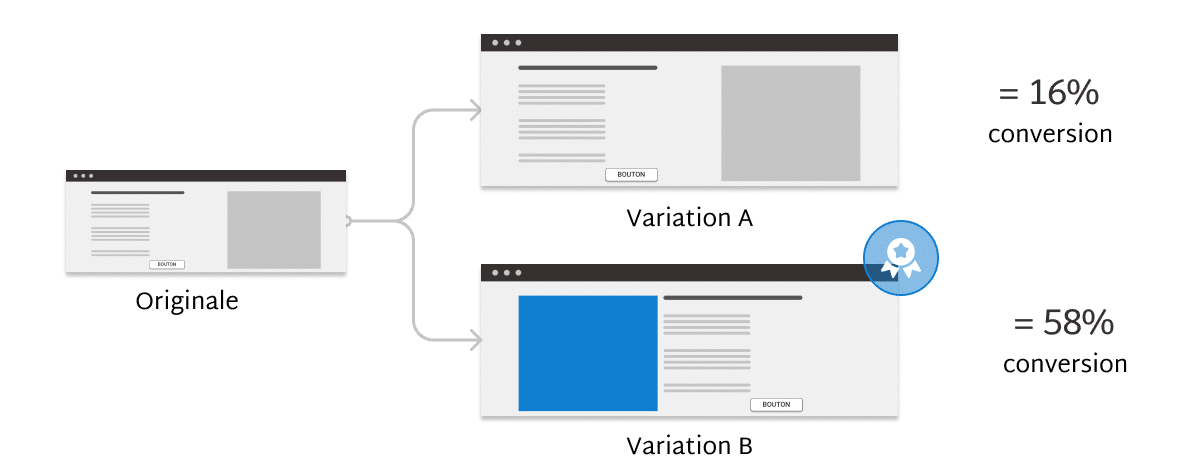
Fig 1. Representation of an A/B test
The division of visitors is usually proportional, so 50% see variation A and 50% see variation B, and relies on specific conditions for segmentation (so we aren’t comparing apples to oranges). However, visitors can also be divided according to other ratios (80/20 for example), depending on the context and what you’re trying to test.
In the end, you’ll look at which version is most effective based on your goals (translated into data), then apply the winning version to the whole page, so that all visitors will see it.
In other words, if your goal is to sell more products, the variation that sells the most products will become your new baseline and will be visible to all visitors.
“The A/B test can be considered the most basic kind of randomized controlled experiment”
– Kaiser Fung, author of multiple books on data science and advanced analytics.
advantages of A/B testing
One of the advantages of A/B testing is that the comparison between variations is done over the same time period. This ensures that your results, and the data you collect, are consistent. Had you simply compared data from before and after you made a change to the site, countless external factors could have influenced your results, leading to false conclusions.
Another advantage is that your analysis is based on statistically significant results. Without getting into details, if one of your test variations gives you a significant result with 95% statistical confidence, that means that if you reproduced your experiment 100 times, you would get the same result 95 times. Reassuring, right?
At Adviso, we’ve helped to build hundreds of experiments from the very simple to the very complex, for many clients in many industries. Here are a few examples of simple experiments that have proven their mettle:
Example 1: Add a “popular” label
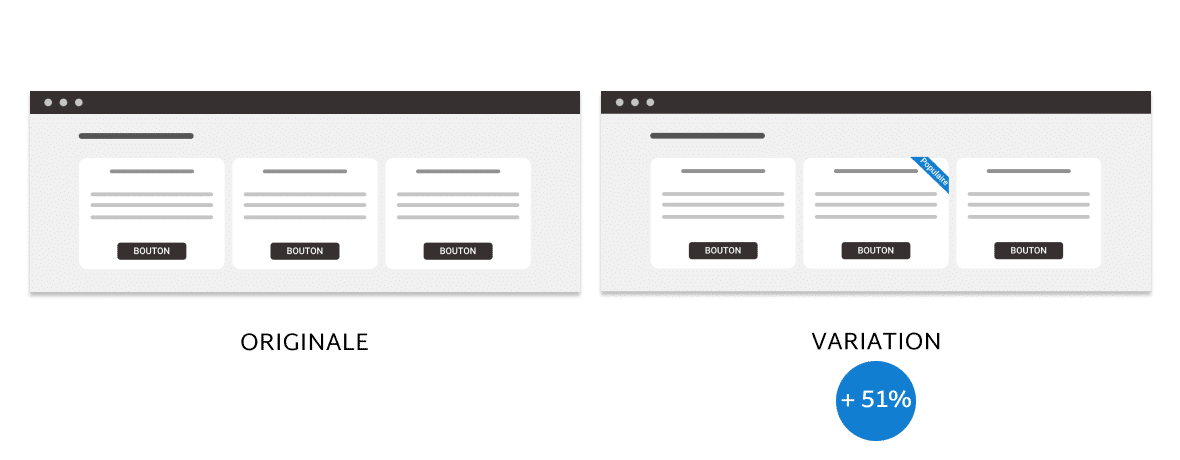
Gains: Conversion for this page is multiplied by 1.5
Learning: When presenting multiple, complex choices, give clear, visual social proofs to help users make a choice and subscribe to the offering.
Example 2: Make your most important button stand out visually
The famous button colour test. Often the butt of jokes in the CRO world because of its simplicity, in some cases it can still sometimes have a positive effect on conversion.
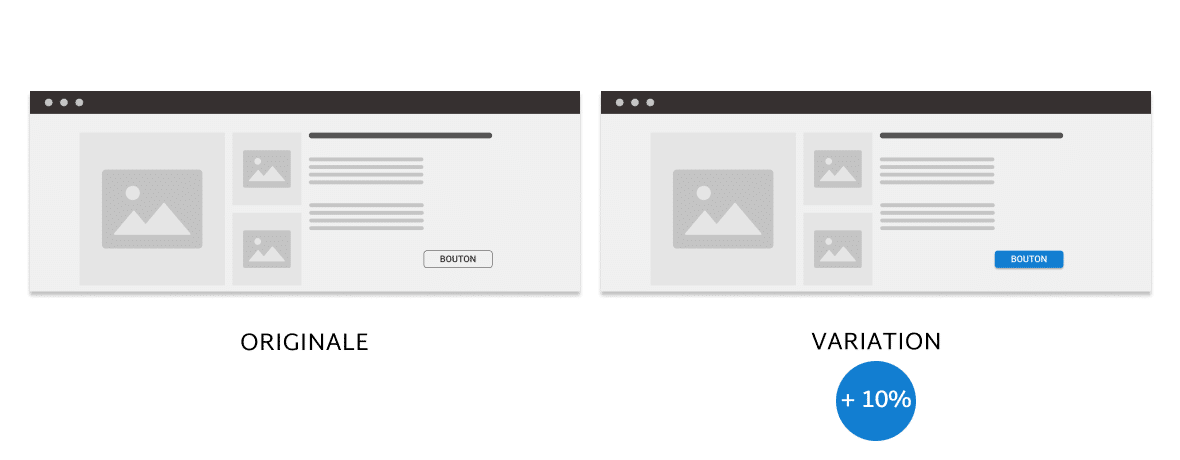
Gains: +10% of visitors add the product to their shopping carts
Learning: Always make sure the main action you want users to take stands out on the page.
Example 3: Add information on the process to be accomplished
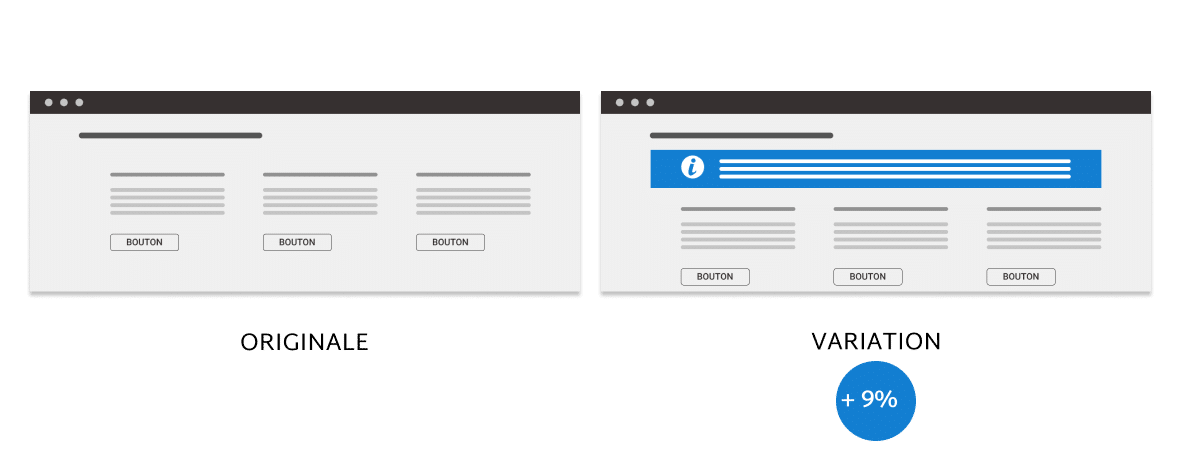
Gains: +9% in forms launched and +19% in forms completed and sent
Learning: Before the user has to start a process that will require some effort, make it easier on them by clarifying what they need to know.
Example 4: Talk about a promotion you’re running
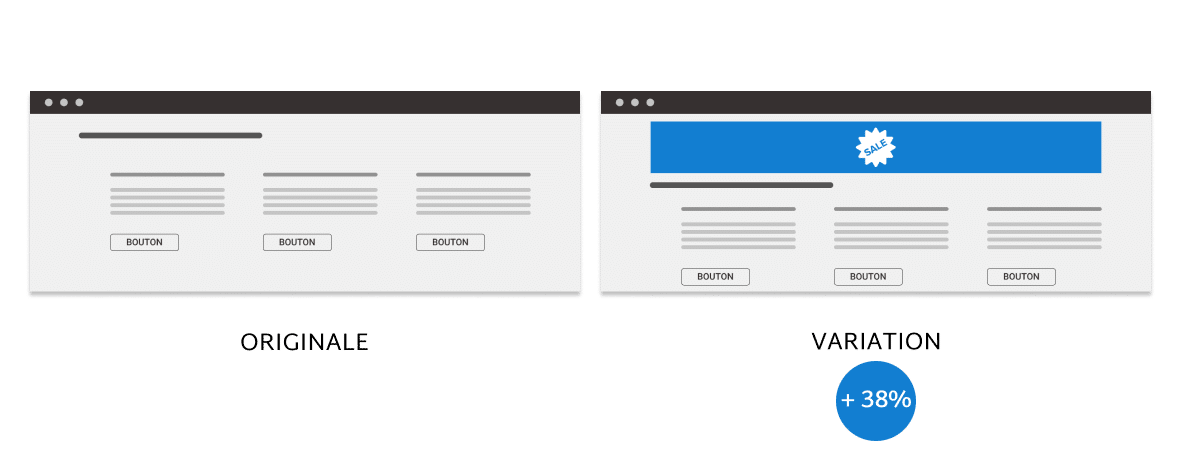
Gains: +38% conversion
Learning: Present your promotions succinctly and in an unmistakable way on the pages of your site that help users make decisions.
To retain: To quickly find ideas for the experiments most likely to have an impact, start by asking yourself the following questions:
- Why are your visitors on your site?
- What obstacles might prevent them from moving forward?
- What might persuade them to move on to the next step?
In conclusion
So you see, even with simple, quick to set up experiments like those presented above, it’s possible to increase the revenue a webpage generates.
In the end, doing CRO means converting your visitors into leads and then into customers, in significant proportions and a sustainable way. However, it goes beyond changing a single element on a page, though that does sometimes work. The heart of the CRO approach involves testing user-centred strategies in order to serve them better.
We’ve only scratched the surface of this subject in this article. There’s so much more to say about the methodology itself, the tools, the processes. In what situations and for what types of companies a CRO approach is indispensable. And of course, how it differs from and complements other user-centred approaches. But, everything in due course!
To set up a CRO strategy that will have a real impact over the long term, many skills related to psychology, design, marketing, analytics and even (in fact, mostly) user research are necessary.
Be careful not to go blindly into an A/B testing process. Sometimes your site just needs some love, so optimize it with solid UX practices.
And to take things further, you can teach yourself about conversion copywriting or read up on statistics for A/B testing.
*If you want to know more, don’t hesitate to write to us. We are always curious to see how a company might be able to benefit from this approach that far too few players out there are taking advantage of. It’s not a tool reserved exclusively for the Amazons, Shopifys and Airbnbs of this world! Rethinking your strategy to increase your revenue? That’s innovation.
Are you ready? Test it!











